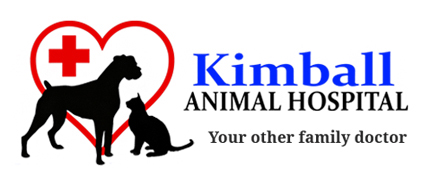Library
-
The anal sacs are two small pouches located on either side of the anus at approximately the four o'clock and eight o'clock positions. The walls of the sac produce a foul smelling fluid which is released whenever the cat passes a bowel movement. The anal sacs or their ducts can become inflamed or infected due to a variety of causes. Most cats will respond well to pain relief medications and antibiotics (for several days until the swelling and inflammation have subsided. If a cat has several episodes of anal sac disease, and diet or supplements do not relieve the problem, the anal sacs can be removed surgically.
-
The anal sacs are two small pouches located on either side of the anus at approximately the four o'clock and eight o'clock positions. The walls of the sac produce a foul smelling fluid which is released whenever the dog passes a bowel movement. Bacteria that are normally present in the feces can readily travel up the ducts and enter the sacs resulting in infection. The first sign is often scooting or dragging the rear along the ground. Treatment for impaction involves expressing or emptying the sacs. Antibiotics are often prescribed. Most dogs will require pain relief medications for several days until the swelling and inflammation have subsided. In recurrent or severe cases, surgical removal of the sacs may be necessary.
-
Anal sac tumors grow quickly and have a moderate risk of spreading to other parts of the body. Depending on the tumor’s size, your pet could develop signs of straining to defecate or produce thin, ribbon-like stool. The best treatment for the primary tumor is surgery. Radiation and chemotherapy may be considered if there is evidence of spreading.
-
Anaphylaxis is an acute severe allergic reaction caused by an overreaction of the body's immune system to an allergen such as a food protein, medication, vaccine antigen, or other chemical. The most common signs include itching, cutaneous edema, hives, excessive drool, vomiting, diarrhea or respiratory distress. Diagnosis is made based on history and physical exam.
-
Anaplasmosis is a tick-borne disease caused by the infectious bacterial organism Anaplasma phagocytophilum. It is transmitted through bites of the deer tick (also known as the black-legged tick) and the Western black-legged tick.
-
Hailing from Turkey, the Anatolian Shepherd Dog was bred to guard livestock. The breed is not well-known outside of his native land, except to fanciers. Guarding instincts are highly developed and can be misplaced if owners are not aware of this.
-
Anemia is a medical term that refers to a reduced number of circulating red blood cells, hemoglobin, or both. It is not a specific disease, but rather the result of some other disease process or condition. The most easily observed and common clinical sign of anemia is a loss of the normal pink color of the gums. Several tests are performed on blood samples to diagnose anemia. If your cat's anemia is so severe that it is life threatening, a blood transfusion will be needed.
-
Anemia is a medical term that refers to a reduced number of circulating red blood cells, hemoglobin, or both. Anemia has a wide variety of causes and appropriate treatments based on the specific cause. Signs of anemia include the loss of the normal pink color of the gums, loss of energy or stamina, weight loss, labored breathing, loss of appetite, a faster than normal heart rate, or signs of blood loss. Several tests are performed to diagnose anemia and additional testing may be required to determine the specific cause. Toxins, infectious diseases, or cancer are some possible causes. Prognosis is variable depending on the underlying cause and how early anemia is diagnosed.
-
Anesthesia is accomplished by administering drugs that depress nerve function. It is important that you fully understand what will happen to your pet, and that you understand the risks. Anesthetic monitoring in a veterinary hospital is like that found in any human hospital. With today's anesthetics, many of which are reversible, your pet should be almost completely normal by the time of discharge.
-
Anesthesia is accomplished by administering drugs that depress nerve function. It is important that you fully understand what will happen to your pet, and that you understand the risks. Anesthetic monitoring in a veterinary hospital is like that found in any human hospital. With today's anesthetics, many of which are reversible, your pet should be almost completely normal by the time of discharge.
